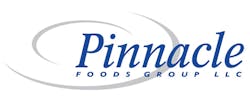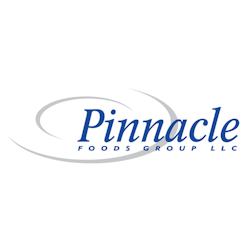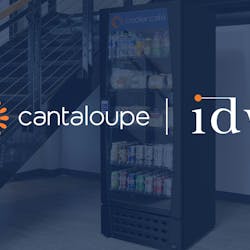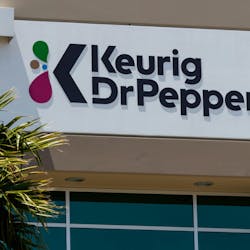PARSIPPANY, N.J., March 01, 2018 (GLOBE NEWSWIRE) -- Pinnacle Foods Inc. reported its financial results for the fourth quarter and full year ended December 31, 2017. Diluted earnings per share for the year more than doubled to $4.45, largely due to items affecting comparability, including a one-time, non-cash benefit of $2.80 per share in 2017, stemming from revaluing deferred tax liabilities as a result of the Tax Cuts and Jobs Act of 2017 (“U.S. tax reform”). Adjusted diluted EPS for the year advanced approximately 19% to $2.55, and the Company expects another year of double-digit growth in Adjusted diluted EPS in 2018, guiding to the range of $2.85 to $2.95.
Full Year 2017 Highlights
- Significantly outpaced retail category performance, growing composite consumption by 2.4% (or 3.5%, excluding exited Aunt Jemima business) and market share by 0.5 points.
- Grew net sales by 0.5% to $3.14 billion (or 2.5%, excluding the AJ Exit1), including underlying net sales growth led by Birds Eye, Duncan Hines and gardein and the benefits of the 53rd week and three extra weeks of Boulder ownership.
- Achieved productivity savings of 4.1% of cost of products sold and Boulder acquisition synergies of $16 million.
- Delivered double-digit Adjusted diluted EPS growth for the fifth consecutive year since the IPO.
- Successfully refinanced the Company’s term loan debt in early 2017, significantly reducing interest expense, improving interest rate exposure on floating rate debt and improving Pinnacle’s liquidity profile.
- Acquired the Beaver Dam frozen warehouse and vegetable packaging business, which will expand the Company’s frozen manufacturing and warehousing capacity, enabling continued top-line growth of the Birds Eye franchise and future margin enhancement of the Frozen segment.
- Generated free cash flow2 of $322 million and reduced total net leverage ratio3 to 3.9x at year-end.
Commenting on the results, Pinnacle Foods Chief Executive Officer Mark Clouse stated, “We delivered another year of exceptional in-market performance, with retail consumption and market share advancing for the sixth consecutive year. At the same time, our financial results reflected a number of discrete issues that we navigated during the year, with the acceleration of strategic manufacturing investments strengthening our network and positioning us well for the future. All in, we are pleased that, despite the impact of the discrete items, we delivered Adjusted diluted EPS growth consistent with our guidance of almost 19% in 2017, including underlying Adjusted EBIT growth in excess of our long-term organic algorithm, due to modest gross margin improvement and aggressive management of expenses.”
[1] Aunt Jemima exit, including the Recall, of certain retail and foodservice breakfast products (the AJ Exit), initiated in May 2017.
[2] Reflects net cash provided by operating activities less capital expenditures.
[3] As defined in the Company’s credit facilities.
Full Year Fiscal 2017 Results
Consolidated net sales for the year increased 0.5% to $3.14 billion, compared to net sales of $3.13 billion in fiscal 2016. This performance reflected underlying net sales growth of 0.5% due to favorable volume/mix of 0.3% and net price realization of 0.2%, despite a reduction of retail inventories at several large customers during the fourth quarter of 2017. Also impacting the performance was the combined benefit of 2.7% from the 53rd week and the three extra weeks from the Boulder Brands acquisition, entirely offset by the AJ Exit of 2.0% and the combined impact of the Boulder SKU rationalization and UK business wind-down totaling 0.7%.
Gross profit declined 5.2% to $868.1 million, or 27.6% of net sales, compared to gross profit of $916.1 million, or 29.3% of net sales, in the year-ago period. This performance reflected the unfavorable impact versus year-ago of items affecting comparability, along with discrete costs totaling $42 million from both the AJ Exit and the acceleration into 2017 of strategic manufacturing investments, as well as unfavorable product mix and input cost inflation, the latter of which increased significantly in the second half of 2017 due to escalating logistics costs. These headwinds were only partially offset by very strong productivity, acquisition synergies, lower performance-based compensation expense and the higher net sales. Excluding items affecting comparability, Adjusted gross profit for the year declined 0.9% to $913.2 million and, as a percentage of net sales, gross profit margin declined 40 basis points to 29.0%, including the $42 million, or 80 basis point, headwind from the discrete items.
Earnings before interest and taxes (EBIT) decreased 6.5% in 2017 to $448.7 million, or 14.3% of net sales, compared to $479.6 million, or 15.3% of net sales, in 2016, primarily reflecting the lower gross profit and items affecting comparability—notably, non-cash tradename impairment charges totaling $66.5 million taken in 2017. Partially offsetting these factors were lower SG&A overhead expenses, largely reflecting reduced performance-based compensation, as well as aggressive cost management and lower marketing expense. Adjusted EBIT, excluding items affecting comparability, but including the discrete costs, increased 5.7% to $569.3 million, or 18.1% of net sales, compared to $538.6 million, or 17.2% of net sales, in 2016.
Net interest expense for the year increased to $169.4 million, compared to $139.1 million in 2016, largely driven by items affecting comparability associated with the term loan refinancing the Company completed in February of 2017 and, to a lesser extent, the impact of the rising interest rate environment on the Company’s floating rate debt. Excluding items affecting comparability, Adjusted net interest expense for the year, which includes interest expenses associated with the 53rd week, decreased 13.4% to $120.0 million, compared to $138.5 million in 2016.
The effective tax rate (ETR) for the year was a negative 90.6%, compared to 38.0% in the year-ago period, almost entirely due to items affecting comparability, which included the one-time, non-cash benefit approximating $335 million from the re-measurement of the Company’s deferred tax liability as a result of the aforementioned U.S. tax reform enacted in late 2017. Also benefitting the ETR in 2017 was the Company’s adoption of the new accounting standard for stock-based compensation. Adjusted ETR for the year declined to 32.3%, compared to 36.6% in the prior year.
Net earnings for the year increased to $532.2 million, or $4.45 per diluted share, compared to $211.1 million, or $1.79 per diluted share, in 2016, meaningfully impacted by items affecting comparability—notably, the impact of U.S. tax reform. Adjusted net earnings advanced 20.0% to $304.4 million, compared $253.7 million in the year-ago period, and Adjusted diluted EPS increased 18.6% to $2.55, including a $0.05 benefit from the 53rd week, compared to $2.15 in 2016.
Net cash provided by operating activities totaled $416 million in 2017 versus $488 million in 2016, primarily reflecting higher working capital associated with the Company’s robust innovation agenda and the cash costs of both discrete items and the Company’s debt refinancing in 2017.
Fourth Quarter Results
Net sales in the fourth quarter of 2017 increased 2.9% to $883.5 million, compared to net sales of $858.5 million in the year-ago period. This performance reflected the 53rd week benefit amounting to 7.2% in the quarter, as well as the 0.6% recovery from the hurricanes that negatively impacted the third quarter of 2017. These positive factors were partially offset by the unfavorable impacts of the AJ Exit of 2.4%, the residual Boulder SKU rationalization of 0.1% and an underlying net sales decline of 2.4%. The underlying net sales decline largely reflected a reduction of retail inventory levels in the quarter at several large customers, despite the continued strong in-market performance, and was comprised of lower volume/mix of 3.3%, partially offset by higher net price realization of 0.8% and favorable foreign currency translation of 0.1%.
Gross profit in the fourth quarter of 2017 increased 2.2% to $273.4 million, or 30.9% of net sales, compared to gross profit of $267.6 million, or 31.2% of net sales, in the year-ago period. This performance reflected the higher net sales, expected strong productivity and a further reduction in performance-based compensation expense, partially offset by higher-than-expected input cost inflation, stemming from escalating logistics and packaging costs, unfavorable product mix and the anticipated impact of residual discrete costs associated with the AJ Exit and accelerated manufacturing investments totaling a combined $7.3 million in the quarter. Also impacting the comparison were items affecting comparability. Excluding items affecting comparability, Adjusted gross profit advanced 2.5% to $274.3, or 31.1% of net sales, compared to $267.7 million, or 31.2% of net sales, in the year-ago period, including the $7.3 million headwind from the discrete items.
EBIT in the fourth quarter of 2017 increased 15.0% to $199.4 million, or 22.6% of net sales, compared to $173.3 million, or 20.2% of net sales, in the fourth quarter of 2016. This performance reflected the growth in gross profit, coupled with lower SG&A overhead expenses resulting from lower performance-based compensation expense and aggressive cost management, partially offset by the unfavorable impact versus year-ago of items affecting comparability. Adjusted EBIT, excluding items affecting comparability but including the discrete costs, advanced 11.9% in the fourth quarter of 2017 to $204.2 million, or 23.1% of net sales, compared to $182.5 million, or 21.3% of net sales, in the year-ago period.
Net interest expense for the quarter declined 12.6% to $31.1 million, compared to $35.6 million in the year-ago period. This reduction was driven by the term loan refinancing the Company completed in February 2017, including the reduction of outstanding indebtedness, partially offset by the additional interest expense associated with the 53rd week.
The ETR for the quarter was a negative 163.8%, compared to 36.0% in the prior-year period, almost entirely due to items affecting comparability, including the one-time, non-cash deferred tax benefit resulting from U.S. tax reform. Also benefitting the ETR was the Company’s adoption in 2017 of the new accounting standard for stock-based compensation. Excluding items affecting comparability, the Adjusted ETR for the quarter was 35.4%, compared to 36.3% in the year-ago period.
Net earnings in the fourth quarter increased to $443.9 million, or $3.71 per diluted share, compared to net earnings of $88.1 million, or $0.74 per diluted share, in the fourth quarter of 2016, including the one-time, non-cash deferred tax liability benefit in the fourth quarter of 2017. Excluding the deferred tax benefit and other items affecting comparability, Adjusted net earnings for the fourth quarter increased 19.5% to $111.8 million, compared to net earnings of $93.5 million in the year-ago period, while Adjusted diluted earnings per share advanced 19.0% to $0.94, including the 53rd week benefit of $0.05, compared to $0.79 in the fourth quarter of 2016.
Net cash provided by operating activities totaled $237 million in the fourth quarter of 2017, compared to $248 million in the year-ago period, primarily reflecting higher working capital, partially offset by the growth in Adjusted net earnings.
Outlook for 2018 and Long-Term Margin Objective
Forecasted Adjusted diluted EPS metrics provided below are non-GAAP measures. The Company does not provide guidance for the most directly comparable GAAP measure, diluted EPS, and we similarly cannot provide a reconciliation between our forecasted Adjusted diluted EPS and diluted EPS metrics without unreasonable effort due to the unavailability of reliable estimates for certain items, such as non-cash gains or losses resulting from mark-to-market adjustments of hedging activities and foreign currency impacts. These items are not within our control and may vary greatly between periods and could significantly impact future financial results.
The Company issued guidance for 2018 Adjusted diluted EPS in the range of $2.85 to $2.95. At the guidance mid-point, this outlook represents growth of 16% versus the comparable 52-week Adjusted diluted EPS of $2.50 in 2017.
Commenting on the Company’s outlook, Clouse added, “Our outlook for 2018 reflects another year of double-digit Adjusted diluted EPS growth, with a return to strong gross margin improvement, partially offset by a return to a more normalized level of SG&A spending and the reinvestment of a portion of the tax reform benefit back into our brands and our people. We remain committed to achieving our long-term gross margin objective but, given the short-term headwinds of escalating inflation and the negative mix effect of out-sourcing new product innovations, we now expect to achieve our targeted gross margin growth in 2020, one year later than previously planned.”
The following assumptions are incorporated into the Company’s 2018 guidance:
- Underlying net sales are expected to grow ahead of category trends, and the benefit of $11 million from lapping the AJ Recall will also drive growth. Significantly offsetting these positive drivers are the lapping in 2018 of the 2017 benefits from the 53rd week and the four months of sales from the exited AJ business.
- The impact of an earlier Easter in 2018 is expected to modestly benefit net sales in the first quarter of 2018, with a corresponding offset in the second quarter. The Frozen segment and, to a lesser extent, the Grocery segment are expected to be most affected by this shift, due to the seasonal nature of those portfolios.
- Approximately two-thirds of the $42 million in discrete items that weighed on 2017 gross margin performance are expected to be tailwinds to 2018 performance.
- The favorable spread between productivity and inflation is expected to narrow significantly in 2018.
- Input cost inflation for the year is estimated in the range of 3.8% to 4.2%, with first half inflation higher than the second half.
- Productivity for the year, including residual acquisition synergies and some early savings from the network optimization program, is estimated in the range of 4.0% to 4.5% of cost of products sold, with second half productivity higher than the first half.
- Net interest expense is forecasted in the range of $123 million to $126 million.
- The ETR for the year, including the impact of U.S. tax reform, is estimated to improve to a range of 24% to 25%, with a portion of the savings reinvested in innovation and marketing behind our brands and a higher 401K match for all our non-union employees.
- The weighted average diluted share count for the year is expected to approach 121 million shares, with the second half of the year higher than the first half.
- Capital expenditures for the full year are expected in the range of $155 million to $165 million.
Regarding its long-term gross margin objective, Pinnacle now expects to achieve its target of 300-400 basis points of improvement versus 2016 by 2020, one year later than previously anticipated. This modification in outlook reflects escalating input cost inflation, particularly with regard to elevated logistics and packaging expenses over the next 12 months, and unfavorable product mix largely associated with the accelerated growth of Birds Eye innovation and the need to outsource production while new capacity comes fully on stream and volume is repatriated.






